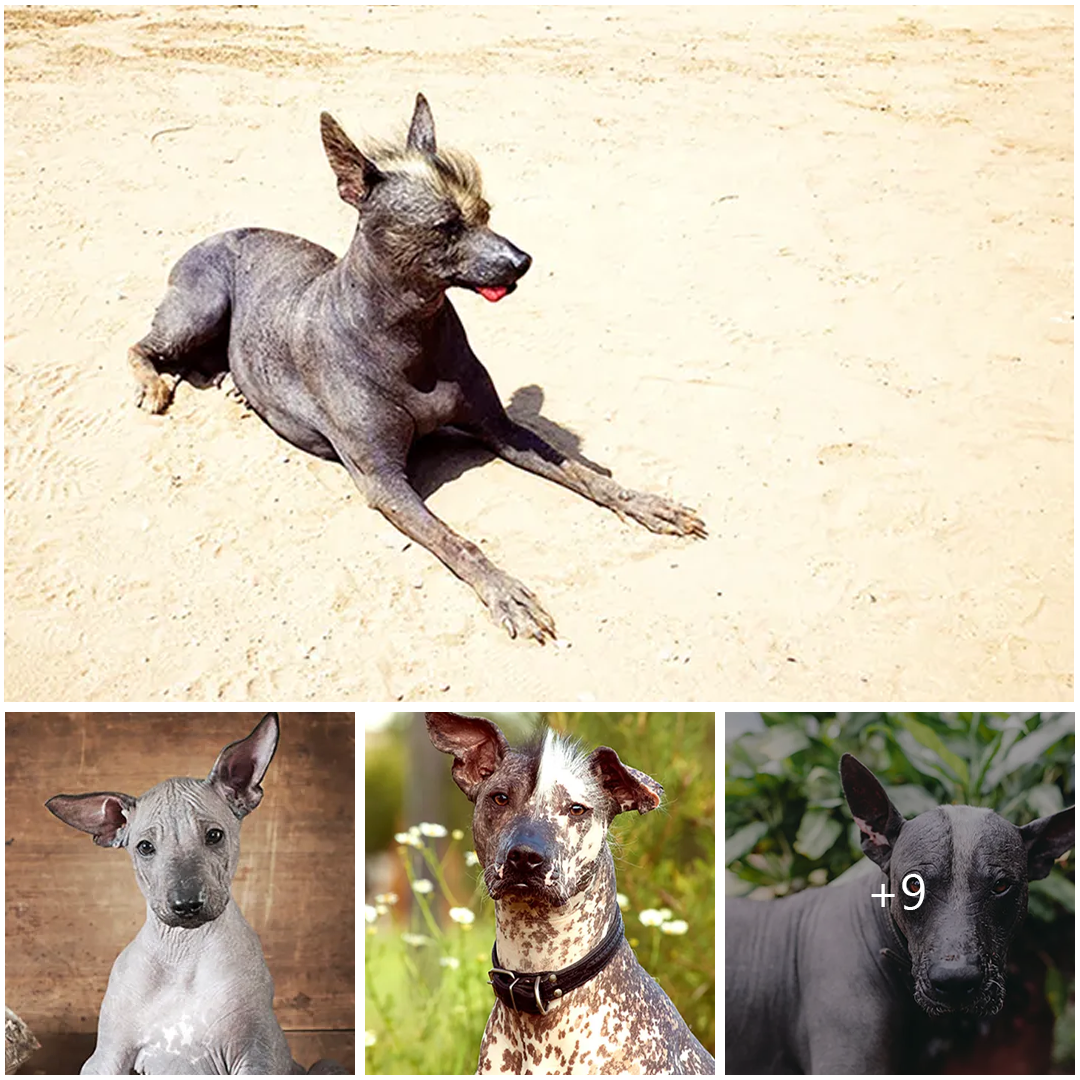

The 3,500-year-old Xoloitzcuintli, (pronounced “show-low-eats-QUEENT-lee”), the ancient Aztec dog of the gods, also known as the Hairless Mexican Dog, is today a loving companion and vigilant watchdog. The alert and loyal Xolo comes in three sizes, and in either hairless or coated varieties. ¿The Xoloitzcuintli comes in three sizes (toy, miniature, and standard), and two varieties (hairless and coated). The hairless has tough, smooth, close-fitting skin. The coated variety is covered by a short, flat coat. Both varieties come in dark colors, ranging from black, gray-black, and slate, to red, liver, or bronze. The face is thoughtful and intelligent, and a Xolo’s forehead will wrinkle when he’s deep in thought. The Xolo’s graceful, elegant body is surprisingly strong and rugged.
Native to Mexico and Central America, the Xolo is also known as the Mexican Hairless
The Xolo is thought to date to pre-Columbian civilizations
Xoloitzcuintles are national treasures in Mexico, with a history that goes back at least 3,500 years. Mentions of these “strange hairless dogs” appear in the journals of Columbus and other European explorers. Ancient Aztecs named the breed for their dog-headed god Xolotl. Xolos were considered sacred by the Aztecs and often were sacrificed and buried alongside their owners to serve as protective guides to the next world. In modern times, Xolos are dedicated watchdogs and companions.
In addition to being a great companion, the Xolo is also a protective watchdog
Xolos are excellent watchdogs and will alert you to anything that seems of concern. They are not nuisance barkers, however, so if they sound off, it’s a good idea to see what has disturbed them. Xolos are wary of strangers and are not the type of dogs to make friends easily with people outside their family. They are also territorial toward other animals that come onto their property. Xolos that have not been well socialized may be aggressive toward people or dogs they don’t know.
The Xolo’s lack of an insulating fur coat makes them feel warm to the touch, even though their body temperature is not any higher than that of other dogs
Back to Top





